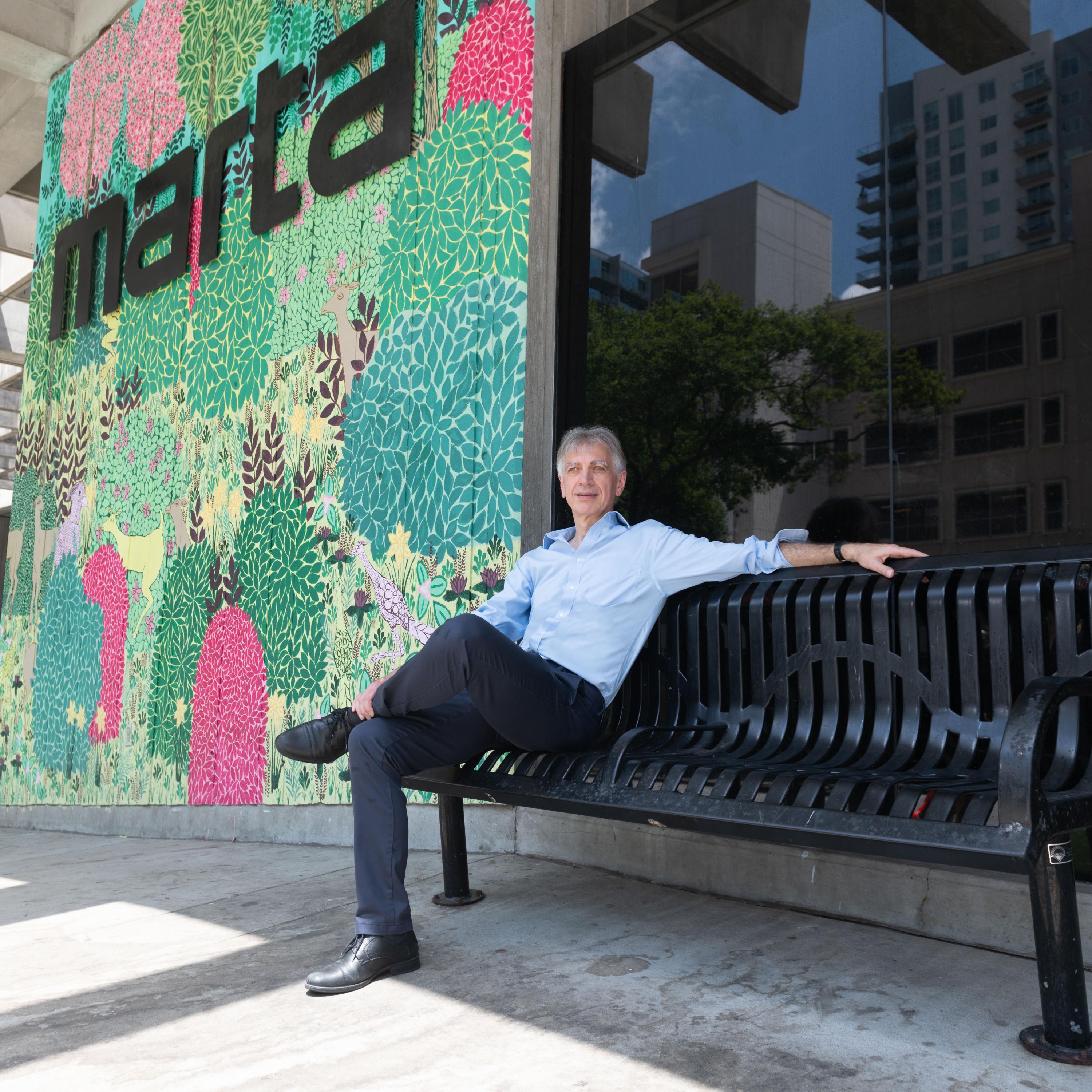If there’s one well-known fact about Atlanta, it’s that the city’s traffic is terrible – and is projected to worsen exponentially as the population increases over the next two decades. According to a study from the Atlanta Regional Commission, the city’s inhabitants will expand to eight million by 2040. In addition, Atlanta has a significant public transportation problem, with only 3% of residents using the MARTA system.
Pascal Van Hentenryck, A. Russell Chandler III Chair and professor in the H. Milton Stewart School of Industrial and Systems Engineering (ISyE) is on a mission to solve this challenging problem through the application of optimization and machine learning to the MARTA system. He specifically plans to increase accessibility to public transportation by creating a scalable, On-Demand Multimodal Transit System (ODMTS) model that will be validated through implementation in the Atlanta region.
The backbone of the proposed ODMTS is small shuttles that take passengers to and from high-frequency light rail and bus hubs, which will only be used in high-density corridors. The shuttles will expand the reach of the system, so people are picked up much closer to their homes and dropped off at or near their destination, making it significantly more convenient for riders to use.
To date, Van Hentenryck has conducted successful case studies on the transit systems in the mid-sized cities of Canberra, Australia and Ann Arbor, Michigan. In both cities, his multi-modal approach has shown a significant reduction in both cost and passenger wait times, and he hopes to apply the same strategies in Atlanta.
In July 2019, Van Hentenryck and his team were awarded a $1.7 million National Science Foundation (NSF) grant through the LEAP HI Program to scale the optimization and machine learning algorithms that were created in Ann Arbor and Canberra for a large city like Atlanta. And in late October 2019, the Socially Aware Mobility (SAM) Lab opened for business. The SAM Lab has an interdisciplinary research team from Georgia Tech and the University of Michigan and an external advisory board comprising representatives of many key metro Atlanta transportation agencies.
“The purpose of NSF’s Leading Engineering for America’s Prosperity, Health and Infrastructure (LEAP HI) Program is to identify opportunities for fundamental engineering research to address major societal problems,” said NSF Program Director Bruce Kramer, who attended the opening event. “The SAM Lab will use new mathematics to reduce the congestion in transportation systems that impacts every resident of our major cities. The enthusiastic cooperation of local agencies has made it possible to use Atlanta as a living laboratory where potential breakthrough methods can be evaluated. NSF looks forward to following the progress of Professor Van Hentenryck and his students.”
The inauguration of the SAM Lab began with a meeting of the external advisory board followed by a panel discussion and reception to which the public was invited. The panel included Van Hentenryck, City of Atlanta Senior Transportation Policy Advisor Jacob Tzegaegbe; Uber Public Affairs Manager (Southeast) Evangeline George; The Ray Executive Director Allie Kelly; and Cox Automotive Mobility Vice President of Business Development and New Ventures Daniel Liniado. The discussion was moderated by Debra Lam, managing director for Smart Cities and Inclusive Innovation at Georgia Tech’s Institute for People and Technology. Steve McLaughlin, dean of the College of Engineering and Southern Company Chair, gave the opening remarks.
“With traffic you always have to be aware that fixing a problem in one place may create a problem in another,” said McLaughlin. “The SAM Lab knows that for reducing congestion, it requires minds that can break apart a problem and work through complexity. Road congestion is the product of interconnectedness that requires an interdisciplinary team working through all facets of the problem.”
Van Hentenryck is eager to get started on the practical aspects of the project. “We have the NSF grant, which provides for the theory, the foundation, the algorithms behind the redesign of the entire MARTA system,” he said. “But we don’t want this to stay in the lab – we want to have a pilot program in place by the end of the project. The next step is to get the partners to work together on this. We have an excellent team put together to make all this happen.”
The SAM Lab pilot program is projected to be ready for implementation in two or three years. In the meantime, Van Hentenryck is refining the ODMTS algorithm with his research partners Subhrajit “Subhro” Guhathakurta, chair and professor of the Georgia Tech School of City and Regional Planning; Patricia L. Mokhtarian, Susan G. and Christopher D. Pappas Professor in the School of Civil and Environmental Engineering; and Yafeng Yin, professor in the University of Michigan School of Civil and Environmental Engineering.
In addition, Van Hentenryck's work on mobility issues includes student researchers. Through the Vertically Integrated Projects program, a team is using data and decision science to improve mobility and accessibility in Atlanta through optimization and machine learning. He is also advising an ISyE Senior Design team that is working with MARTA to create a hypothetical redesign of MARTA’s bus network to better align routes with current usage.
“Given the rapidly evolving mobility landscape and attendant challenges facing MARTA, the opening of the SAM Lab couldn’t have happened at a more opportune time,” said Rob Goodwin, director of research and analytics at MARTA. “I look forward to working with Professor Van Hentenryck to explore new technologies and approaches that will help shape the future of transit in metro Atlanta.”
“If we successfully implement the ODMTS here in Atlanta, it will prove that the algorithm can be scaled for a major city,” Van Hentenryck added. “And then it can be effectively used in large cities around the world.”
You can stay updated on the SAM Lab's work through its Twitter account: @AwareSam.
